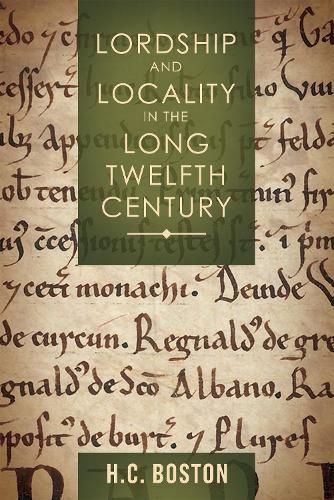Lordship and Locality in the Long Twelfth Century
Hannah Boston

Lordship and Locality in the Long Twelfth Century
Hannah Boston
A new perspective on lordship in England between the Norman Conquest and Magna Carta.
Multiple lordship- that is, holding land or owing allegiance to more than one lord simultaneously- was long regarded under the western European "feudal" model as a potentially dangerous aberration, and a sign of decline in the structure of lordship. Through an analysis of the minor lords of Leicestershire, Derbyshire, and Staffordshire during the long twelfth century, this study demonstrates, conversely, that multiple lordship was at least as common as single lordship in this period and regarded as a normal practice, and explores how these minor lords used the flexibility of lordship structures to construct localised centres of authority in the landscape and become important actors in their own right.
Lordship was, moreover, only one of several forces which minor lords had to navigate. Regional society in this period was profoundly shaped by overlapping ties of lordship, kinship, and locality, each of which could have a fundamental impact on relationships and behaviour. These issues are studied within and across lords' honours, around religious houses and urban areas, and in a close case study of the abbey of Burton-upon-Trent. This book thus contextualises lordship within a wider landscape of power and influence.
This item is not currently in-stock. It can be ordered online and is expected to ship in approx 2 weeks
Our stock data is updated periodically, and availability may change throughout the day for in-demand items. Please call the relevant shop for the most current stock information. Prices are subject to change without notice.
Sign in or become a Readings Member to add this title to a wishlist.


